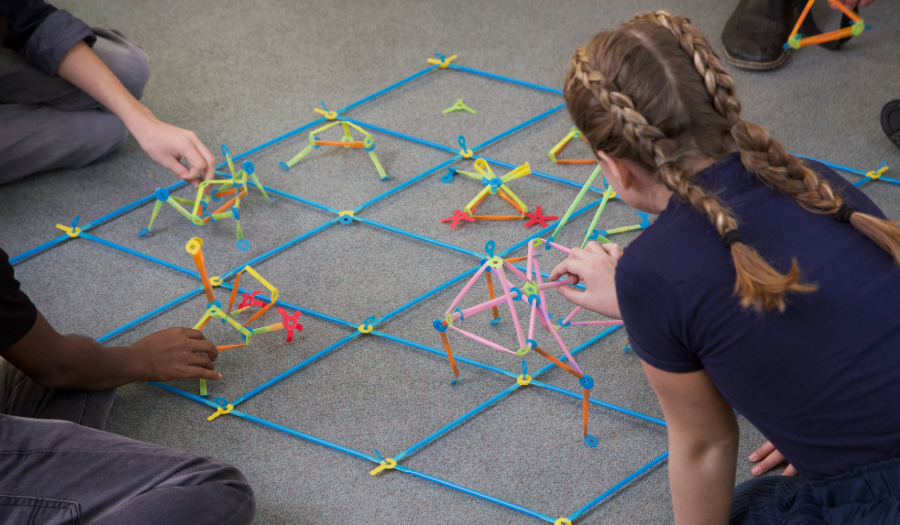Integrating STEAM Learning into UK Schools: A Comprehensive Guide
In recent years, there has been a growing emphasis on integrating STEAM (Science, Technology, Engineering, Arts, and Mathematics - an enhanced version of the more commonly known STEM) learning into educational curricula worldwide which includes the National Curriculum in England and the Curriculum for Excellence in Scotland. This interdisciplinary approach to education fosters critical thinking, problem-solving skills, creativity, and innovation – all essential for preparing learners for the challenges of the 21st century.
In this article, we'll explore the significance of STEAM education and provide practical tips for integrating it into your school. Whether you’re a seasoned STEAM educator or new to this integrated approach, these suggestions will give you the tools needed for a seamless transition into the amazing world of STEAM learning and development.

Understanding the Importance of STEAM Education
Before we dive into the main topic of integrating STEAM learning into your school we need to take a step back and understand why this style of education is so important. Here are some key reasons why STEAM learning is crucial for UK schools:
Preparation for the Future: In today's rapidly evolving world, proficiency in STEAM subjects is increasingly important for future career success. By equipping learners with STEAM skills, schools can better prepare them for the demands of the modern workforce.
Above and Beyond: STEAM goes beyond traditional subject boundaries, encouraging learners to explore connections between disciplines and apply their knowledge in real-world contexts.
Promotion of Critical Thinking and Problem-Solving: STEAM education encourages learners to think critically, analyse problems, and develop innovative solutions. These skills are invaluable not only in STEM-related fields but also in various aspects of everyday life.
Fostering Creativity and Innovation: By incorporating the arts into STEM subjects, STEAM education nurtures creativity and encourages learners to approach problems from multiple perspectives. This interdisciplinary approach stimulates innovation and fosters a culture of creative thinking.
Addressing Societal Challenges: Many of the pressing challenges facing society today, such as climate change and healthcare, require interdisciplinary solutions. STEAM education equips learners with the skills and knowledge needed to tackle these complex issues collaboratively.
Tips for Integrating STEAM Learning
Integrating STEAM learning into UK schools requires a multifaceted approach that encompasses various strategies to ensure learners receive a well-rounded education that prepares them for future success. Let's delve deeper into each strategy:
Curriculum Integration
Curriculum integration involves incorporating STEAM principles seamlessly into existing subject curricula. By identifying natural connections between disciplines, educators can create cohesive learning experiences that engage learners across multiple domains. For instance, a history lesson on the Industrial Revolution could explore not only the social and economic impacts but also the technological innovations that drove industrialisation, fostering an understanding of the intersection between history, technology, and society.
Project-Based Learning (PBL)
Project-based learning immerses learners in real-world scenarios where they must apply STEAM concepts to solve authentic problems. Through collaborative projects, such as designing sustainable solutions for environmental challenges or building prototypes for innovative inventions, learners develop critical thinking, creativity, and collaboration skills. PBL encourages inquiry-based learning, where learners actively explore topics of interest, fostering curiosity and intrinsic motivation.
STEAM Clubs and Extracurricular Activities
STEAM clubs and extracurricular activities provide learners with opportunities for hands-on exploration and experimentation outside the traditional classroom setting. These clubs can cater to diverse interests and skill levels, offering activities ranging from robotics and coding to art and design projects. By participating in STEAM clubs, learners develop practical skills, pursue their passions, and engage in peer learning experiences that supplement formal education.
Professional Development for Teachers
Equipping educators with the necessary knowledge and skills to effectively integrate STEAM principles into their teaching practices is crucial for successful implementation. Professional development opportunities, such as workshops, seminars, and online courses, empower teachers to design engaging STEAM lessons, leverage technology effectively, and assess learner learning outcomes. Ongoing support and collaboration among educators facilitate the sharing of best practices and continuous improvement in STEAM education.
Partnerships with Industry and Community Organisations
Collaborating with industry and community organisations enriches learners' learning experiences by providing access to real-world experts, resources, and opportunities. Partnerships with local businesses, universities, museums, and research institutions offer learners insights into STEAM careers and expose them to cutting-edge technologies and practices. Guest speakers, field trips, and internships enable learners to see the relevance of STEAM concepts in various professional contexts, inspiring them to pursue STEM-related fields.
Investment in Resources and Infrastructure
Allocating resources (through investments, grants, funding or sponsorships) for the procurement of STEAM equipment, materials, and technology infrastructure is essential to facilitate hands-on learning experiences and promote exploration and experimentation. Schools can invest in state-of-the-art tools, such as 3D printers, microcontrollers, and scientific instruments, to support STEAM initiatives. Accessible makerspaces or innovation labs provide learners with designated spaces to collaborate, prototype, and innovate, building a culture of creativity and exploration.
Assessment and Evaluation
Developing comprehensive assessment strategies is vital for measuring learners' progression with STEAM concepts and skills effectively. Performance-based assessments, such as project portfolios, presentations, and demonstrations, allow learners to showcase their understanding and abilities in authentic contexts. Rubrics and criteria-based assessments provide clear expectations and feedback, guiding learners' progress and informing instructional decision-making. By aligning assessments with learning objectives and standards, educators can ensure that STEAM education is rigorous, meaningful, and equitable for all learners.
Incorporating these strategies into the educational landscape of UK schools not only enhances the quality of STEAM education but also fosters a culture of innovation, creativity, and lifelong learning. By embracing interdisciplinary approaches and investing in the professional development of educators and resources, UK schools can empower learners to become future-ready individuals equipped to tackle real-world challenges and opportunities.

Overcoming Challenges and Barriers in Integrating STEAM Learning
Despite the multiple benefits of integrating STEAM learning into UK schools, several challenges and barriers seem ever-present. To stand any chance of a successful curricula-aligned implementation, it’s important to address these to ensure a STEAM approach to learning can be maintained over the long term.
Resource Constraints
Limited funding and access to specialised equipment and materials can pose a significant challenge to implementing STEAM initiatives in schools. To address this, schools can:
- Seek External Funding: Explore grants, sponsorships, and partnerships with businesses, foundations, and government agencies to secure additional funding for STEAM programs and resources.
- Leverage Community Partnerships: Collaborate with other schools, local businesses, universities, and community organisations to access shared resources, expertise, and facilities. Establishing reciprocal partnerships can provide schools with access to specialised equipment and mentorship opportunities for learners.
- Utilise Your School Network: As well as collaborating with community partners, utilising your own network of schools is an effective way of sharing resources as well as costs. Whether you are part of a MAT (Multi Academy Trust) or have connections through councils or localised networks, group purchasing power also has other benefits such as reduced risk, sharing of knowledge and enhanced connections within your local network.
Teacher Training and Support
Many educators may lack the necessary training and support to effectively integrate STEAM principles into their teaching practices. To support teachers in this endeavour, schools can:
- Provide Ongoing Professional Development: Offer regular workshops, seminars, and courses focused on STEAM pedagogy, instructional strategies, and technology integration. Tailor professional development opportunities to meet the diverse needs and interests of educators.
- Facilitate Mentorship Programs: Pair novice teachers with experienced STEAM educators or industry professionals to provide mentorship and guidance. Peer learning communities and collaborative lesson-planning sessions can foster a culture of continuous improvement and innovation among educators.
Curricular Constraints
Within some curricula, strict requirements and standardised testing pressures may limit the flexibility of schools to incorporate STEAM learning opportunities. To address this, schools can:
- Advocate for Curriculum Reform: Engage with policymakers, educational leaders, and stakeholders to advocate for curriculum reform initiatives that prioritise interdisciplinary approaches to education. Highlight the importance of STEAM education in preparing learners for future success and fostering creativity, critical thinking, and innovation.
- Promote Cross-Curricular Integration: Encourage educators to identify and capitalise on opportunities for cross-disciplinary connections within existing curricula. Emphasise the value of integrating STEAM principles into core subjects, such as science, mathematics, language, arts, and social studies, to enhance relevance and engagement.
Equity and Inclusion
Ensuring equitable access to STEAM education for all learners, regardless of their background or socioeconomic status, is essential to address disparities in educational opportunities. To promote equity and inclusion, schools can:
- Address Barriers to Participation: Identify and mitigate barriers that may prevent certain groups of learners from participating in STEAM programs, such as financial constraints, lack of transportation, or cultural stereotypes. Provide targeted support and resources to underserved communities to promote access and engagement.
- Promote Diversity in STEAM: Celebrate diversity and multicultural perspectives in STEAM education by incorporating culturally relevant content, diverse role models, and inclusive teaching practices. Create safe and supportive learning environments where all learners feel valued, respected, and empowered to participate in STEAM activities.
Summary
By addressing these challenges proactively and implementing targeted strategies, UK schools can create inclusive, innovative, and equitable STEAM learning environments that empower all learners to succeed within the educational environment and well into their careers.
You May Also Like
These Related Stories

Top 7 Tips for Using Strawbees Classroom

Nurturing Curiosity: The Nuances Between STEM and STEAM in UK Education



No Comments Yet
Let us know what you think